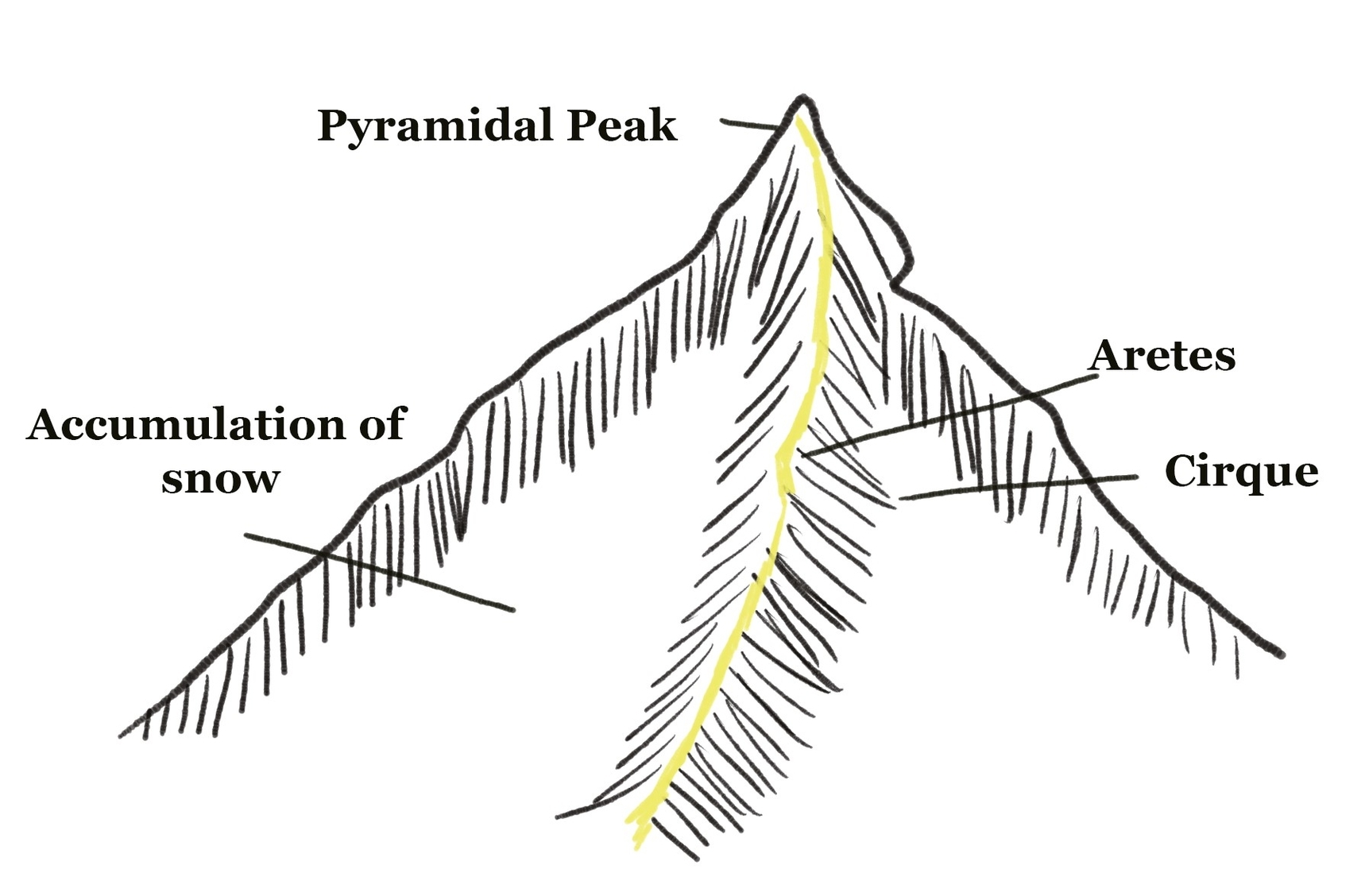
Landforms of glaciation are the result of the movement of glaciers and the meltwater that flows from them. Glaciers are large masses of ice that form in areas where snow accumulates faster than it melts. As more snow accumulates, the weight of the snow compresses the lower layers into ice. Over time, the ice becomes so heavy that it begins to flow downhill under the force of gravity. As the ice moves, it erodes the land beneath it, creating a variety of landforms.
One of the most common landforms created by glaciers is the U-shaped valley. As a glacier moves down a valley, it erodes the sides and bottom of the valley, creating a broad, flat bottom and steep, straight sides. The resulting shape of the valley resembles the letter “U”. Another common landform is the cirque, which is a bowl-shaped depression that forms at the head of a glacier. When snow and ice accumulate in a hollow on the side of a mountain, they form a small glacier. Over time, the glacier erodes the rock beneath it, creating a steep-walled, circular depression.
As the glacier moves down the mountain, it may pick up large rocks and boulders. When the glacier melts, these rocks are deposited on the ground, creating a landform called a moraine. Moraines can be found along the sides and at the end of glaciers. They can be used to determine the extent of past glaciers and the direction in which they flowed.
Another common landform created by glaciers is the drumlin. A drumlin is a long, narrow hill that is shaped like an inverted spoon. It is formed when a glacier moves over an area that has alternating layers of hard and soft rock. The glacier erodes the soft rock more quickly than the hard rock, creating a streamlined hill that points in the direction of the glacier’s movement.
Glaciers can also create kettle lakes. When a glacier melts, it leaves behind large chunks of ice that are buried in the sediment. Over time, the ice melts, leaving a hole in the ground. If the hole fills with water, it becomes a kettle lake. Kettle lakes are often found in areas that were covered by glaciers during the last ice age.
In conclusion, landforms of glaciation are created by the movement of glaciers and the meltwater that flows from them. These landforms include U-shaped valleys, cirques, moraines, drumlins, and kettle lakes. They are important features of the landscape and can provide valuable information about past climates and geological processes.
